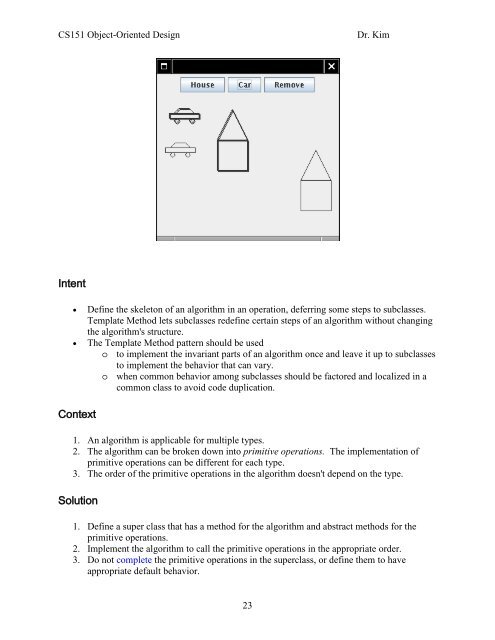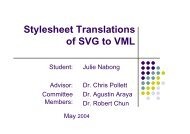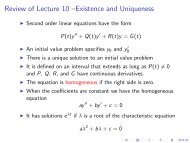Chapter 6: Inheritance and Abstract Classes Chapter Topics 6.1 ...
Chapter 6: Inheritance and Abstract Classes Chapter Topics 6.1 ...
Chapter 6: Inheritance and Abstract Classes Chapter Topics 6.1 ...
You also want an ePaper? Increase the reach of your titles
YUMPU automatically turns print PDFs into web optimized ePapers that Google loves.
CS151 Object-Oriented Design<br />
Dr. Kim<br />
Intent<br />
• Define the skeleton of an algorithm in an operation, deferring some steps to subclasses.<br />
Template Method lets subclasses redefine certain steps of an algorithm without changing<br />
the algorithm's structure.<br />
• The Template Method pattern should be used<br />
o to implement the invariant parts of an algorithm once <strong>and</strong> leave it up to subclasses<br />
to implement the behavior that can vary.<br />
o when common behavior among subclasses should be factored <strong>and</strong> localized in a<br />
common class to avoid code duplication.<br />
Context<br />
1. An algorithm is applicable for multiple types.<br />
2. The algorithm can be broken down into primitive operations. The implementation of<br />
primitive operations can be different for each type.<br />
3. The order of the primitive operations in the algorithm doesn't depend on the type.<br />
Solution<br />
1. Define a super class that has a method for the algorithm <strong>and</strong> abstract methods for the<br />
primitive operations.<br />
2. Implement the algorithm to call the primitive operations in the appropriate order.<br />
3. Do not complete the primitive operations in the superclass, or define them to have<br />
appropriate default behavior.<br />
23




